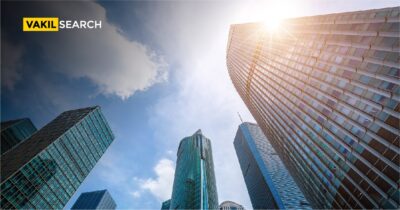You'll need startup assets while starting your business. Find more information regarding business startup costs.
Overview to Business Startup
Everything you had on board when you first started your business is included in the first category. This could include anything priceless, like money in a bank account, machinery, property, or structures. It may also be used to describe various kinds of priceless property, like software, trademarks, and copyrights. The items you’ll need when launching your start-up fall under the second category of startup Business assets. These could be anything like machinery or equipment, or they could simply be the basic ingredients needed to construct your products. It can also contain assets like office buildings or office supplies like computers and office furniture.
These are all referred to as your startup Business assets. Moreover, the type of firm you are starting will determine what qualifies as a start-up asset. This is significant because acquiring these assets was expensive for the organization in the beginning.
The amount of cash your start-up can secure will depend on how accurately you calculate these assets. When seeking finance, you must determine precisely how much money you require for startup Business assets and incorporate them into your financial predictions.
Whenever you do this, keep in mind that you are estimating. The figures you develop don’t have to be precisely perfect, and they probably won’t be either. As a result, whenever you estimate a figure, you must always add roughly 10% to 20%. You should also try to avoid getting too specific when calculating these values.
The primary objective is to determine how much cash you will need to start the firm, to ensure that you have enough cash on hand to purchase these assets, and to begin your enterprise successfully.
Operating costs are another factor to consider when calculating how much cash you’ll require. Because they are frequently recurring expenses, these are distinct from startup Business assets. Examples of them include paying salaries and wages, marketing costs, loan debt, as well as rent and lease obligations.
It’s crucial to budget for and consider these costs while looking for startup finance. You will require enough cash to cover these costs up until the point at which the business either breaks even or starts to turn a profit. If you don’t figure things out properly, your company can run out of cash before turning a profit and fail.
Ways to Reduce Business Startup Costs
There is no doubt that launching a business may be expensive, with many fees being non-negotiable. Do your homework before making large purchases, and be aware that there are ways to cover some of these beginning fees on the cheap.
For instance, adopting accounting software can reduce the expense of employing a professional bookkeeper. Leasing office space is more expensive than working from home or in a coworking environment. Utilizing social media might also reduce your marketing expenses.
Certain expenses are worthwhile. Don’t acquire low-quality equipment just because it is less expensive; you will end up spending time and money on repairs and ultimately needing to buy new equipment. If you’re uncertain, consult a lawyer or accountant. Additionally, make sure that your advertising campaigns and website have a polished appearance.
Learn More: Business Start up Costs
Business Asset Definition
Business assets are expensive possessions that belong to your company. Cash, investments, equipment, and even the reputation of your company are examples of commercial assets.
Understanding assets is crucial since they are crucial to corporate accounting. You must mention corporate assets while preparing a balance sheet, for instance, in order to comprehend your company’s financial status (and business liabilities).
Make an inventory of everything your company possesses, from workstations to data, as the first step. Then, you typically classify business assets and divide them into various sorts. Here is a list of the various categories.
Describe Fixed Assets
According to the definition of fixed assets, this asset might be any tangible item or piece of equipment that a business uses for its revenue-generating activities.
Such resources are difficult to turn into cash or currency equivalents. Furthermore, they are difficult to use up or sell off in a specific accounting year. Typically, examples of fixed assets include real estate, brand names, patents, machinery, delivery vehicles, stock, operational equipment, etc.
Describe Current Asset
All holdings that can be quickly sold, used, consumed, and transformed into cash through proper trade activities in one fiscal year are considered current assets of an enterprise. This kind of asset can be shown on a company’s balance sheet. Every year, it is vital to provide balance sheets, which are a crucial type of accounting statement.
One significant distinction between fixed and current assets is that fixed holdings cannot realistically be turned into cash in less than a year. At the same time, current holdings are essential for firms since they can be used to cover ongoing operating costs and regular economic demands. Since the term is defined as the monetary value of all assets and resources that may be quickly converted into hard currency, it establishes an enterprise’s liquid assets. However, it should be highlighted that only those qualified assets that can be converted into liquid funds in less than a year are included.
Important Differences Between Current Assets and Fixed Assets
- Fixed assets are noncurrent assets that a corporation owns and uses continually to generate income. On the other hand, current assets are things that can be sold in the next year
- It’s challenging to convert a fixed asset into actual cash. In contrast, it is simple to convert current assets into real money
- An organization uses fixed holdings to produce goods and services. They remain in storage for over a year. On the other hand, a corporation keeps readily accessible current assets such as cash and cash equivalents. Because of this, current assets are held for a shorter period than a year
- Fixed assets are valued at their whole value, which is the current cost excluding any depreciation. On the other hand, the value of existing holdings is equal to the lesser of the market price or their worth
- The fact that fixed assets require a flat sum of investment and are acquired using long-term capital is another distinction between them and current assets. For the acquisition of those assets, the latter requires short-term investments
- Mortgages can be retained on current assets as collateral for loans, but they cannot be placed on fixed holdings
- Fixed assets represent fixed costs, whereas current holdings are subject to a floating fee.
Conclusion
When calculating the number, remember that it may take several years for your business to profit. This can last for one, two, or even five years. As a result, it’s crucial to take these timelines into account while creating your initial business plan and asking for finance.
Also, Read:










